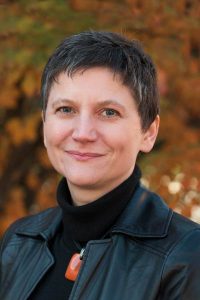
Dongarra Professor Michela Taufer
Dongarra Professor of Computer Science Michela Taufer and EECS Computer Science graduate student Nigel Tan have been awarded a Best Track Paper Award at the 2021 International Conference on Computational Science (ICCS). Co-authored with Robert F. Bird and Guangye Chen of Los Alamos National Laboratory, their paper is entitled “Optimize Memory Usage in Vector Particle-In-Cell (VPIC) to Break the 10 Trillion Particle Barrier in Plasma Simulations.” This research involves improvements to computer memory that enable more complex computer simulations of plasma- matter so superheated that the electrons are ripped away from the atoms, forming an ionized gas.
Vector Particle-In-Cell (VPIC) is a high-performance “particle-in-cell” code that can be used to model plasma phenomena such as magnetic reconnection, fusion, solar weather, and laser-plasma interaction. VPIC simulations use large numbers of particles (i.e., on the order of trillions of particles) to model real world phenomena. It is one of the fastest plasma simulation codes in the world, with particle numbers ranging from one trillion on the first petascale system, Roadrunner, to ten trillion particles on the more recent Blue Waters supercomputer.
As supercomputers continue to grow rapidly in size, so, too, does the gap between computing capability and computer memory capability. Current memory systems greatly limit VPIC simulations because the maximum number of particles that can be simulated directly depends on the available memory. This study presents a suite of VPIC memory optimizations that enable a significant increase in the number of particles in VPIC simulations. Taufer, Tan, Bird and Chen assess the optimizations’ impact on a GPU-accelerated Power9 system computer. Their optimizations have enabled a nearly one-third reduction in memory usage and up to a 40% increase in the number of particles.